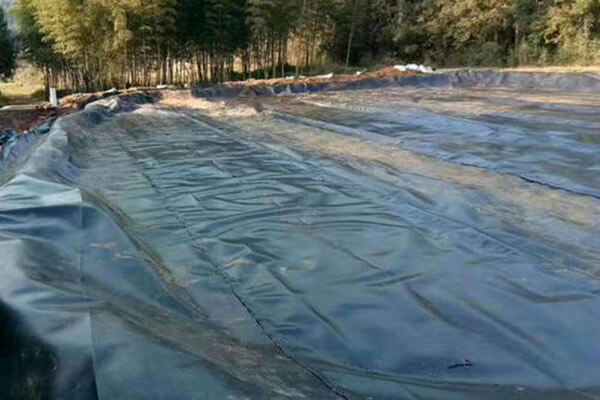Special equipment should be used for geotextile pasting
(1) When pasting geotextiles, strictly control the amount of hot asphalt within the range of 0.8 ~ 1.2 kg/m2. If the amount of paving is too large, the bottom surface of the geotextile will be slippery and displaced after the asphalt mixture is spread, causing immediate oil leakage and cracks after rolling; the fuel consumption is low, and the geotextile is not sticky. Under the action of the road roller, the geotextile will shift and be discounted, and cracks will appear on the asphalt pavement after rolling.
(2) For road sections with a small bend radius, use scissors to cut the geotextile in the bend, cut one side and splice the other side, which can reduce the probability of geotextile discount and asphalt pavement cracking.
(3) High-temperature-resistant, single-sided singeing geotextile must be used, and the singeing side must face up. The pasted geotextile prohibits vehicles from passing, and vehicles are not allowed to brake, turn, or turn around on it.
(4) During construction in winter, concentrated emulsified asphalt and modified emulsified asphalt cannot be used as the binder or bonding layer oil of geotextile, because the water after demulsification of emulsified asphalt is immersed in the geotextile and is not easy to volatilize, which affects the contact between the geotextile and the top and bottom. Adhesion between the surfaces. In addition, modified emulsified asphalt is easy to block in winter and is difficult to spray.
(5) At the moment of opening and closing the nozzle, the hot asphalt will agglomerate when it falls on the ground. The agglomerated asphalt must be manually removed, otherwise, there will be oil spills after the hot asphalt mixture is spread.
(6) The height of the nozzle spraying hot asphalt should be controlled within 40 ~ 50 cm from the ground. If the nozzle is too low, the asphalt is easy to agglomerate; if the nozzle is too high, the misty asphalt will easily drift out of the boundary, causing a waste of asphalt.

(7) For anti-cracking asphalt concrete, in order to improve rutting resistance, cement or lime should not be used as an anti-stripping agent, otherwise, the time of reflection cracks will be advanced.
(8) After the paving is completed, due to inaccurate fuel consumption control or other reasons, the geotextile layout part wrinkles, causing the lower layer of asphalt to crack. The geotextile must be re-pasted and the asphalt concrete must be removed after removal.
(9) The temperature of hot bitumen must be kept above 150℃, and the bitumen tank and oil pipe should be insulated. Asphalt used in winter construction is easily sprayed and atomized.
(10) Special equipment should be used for geotextile pasting, followed by hot asphalt nozzles; the seams of geotextiles should be flat seams, not lap joints. According to the survey, the probability of damage to the geotextile at the lap joint is greater, but the flat joint should avoid the longitudinal and transverse seams.
(11) Trucks should enter and leave the construction site on temporary access roads paved with iron sheets or wooden boards, and the wheels should try to avoid the sticky asphalt on the edge of the geotextile, otherwise, the wheels will easily roll away the geotextile.
(12) To prevent the pasted geotextile from getting wet by rain, asphalt concrete should be laid in time. If it cannot be laid in time for some reason, the colored striped cloth should be covered as a rainproof measure.
(13) In sections with large longitudinal slopes or ultra-high transverse slopes, the anti-cracking geotextile is easy to shift during construction or operation. Geotextiles should not be used as anti-cracking measures on sections with large longitudinal or ultra-high transverse slopes.
(14) Hot asphalt is used as the binder of the anti-cracking geotextile, and winter construction should be avoided as much as possible.
